Ross Mantle lives and works in his native Pittsburgh, PA. He divides his time between self-initiated projects, client commissions, and teaching at Carnegie Mellon University. Ross’ work is based in documentary traditions while actively questioning this genre’s methods and histories to formulate new forms of visual storytelling. He works across photographic approaches from landscape and portraiture to architecture and still life, bringing these disparate modes together through careful sequencing that build layered narratives.
Ross has been commissioned by Herman Miller, Google-Design, Monocle, Dwell, Metropolis, The FADER, TIME, WSJ., The New York Times, WIRED, Rolling Stone, American Express, Air Canada, MASS MoCA, Whole Foods Market, and the Brooklyn Botanic Garden amongst others. Ross’ prints and books are in the collections of the Antenna Reading Room, Franklin Furnace Artists’ Books Collection, Herman Miller Inc., Museum of Fine Arts Houston, The MFAH Hirsch Library, The Houston Center for Photography’s John Cleary Library. In 2013, Ross received the Keystone Award from the Silver Eye Center for Photography in Pittsburgh, PA and in 2012, he was selected for Young Guns X by the Art Directors Club in New York City.


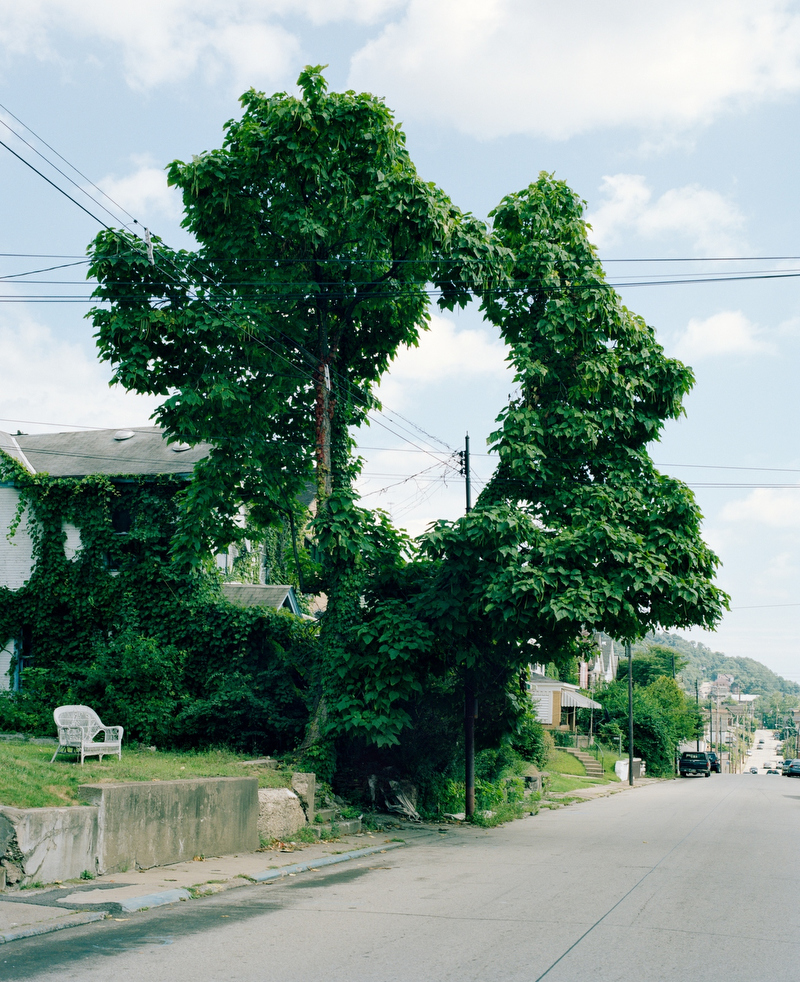
Misplaced Fortunes
“One doesn’t start by asking one and all where a treasure is. That’s an opener, but a better questioning method is to express interest in local recluses, scandals, missing fortunes, rags to riches, back to rags stories, murders, suicides, once-rich families now poor, robberies, and that sort of thing. Don’t be afraid that a good many people will think you a bit touched. They will and that’s ok. That’s part of the price of being a treasure hunter.” H. Glenn Carson, Cache Hunting
—
Misplaced Fortunes guides readers on a literal and metaphoric treasure hunt. Navigating three centuries of history, legend, and lies, the work explores America’s colonialist ambitions, unquestioned obsession with progress, and the stories we choose to tell about it. The project weaves photographs, original and found text, historic imagery, and typographic symbols into an interrogation of the myth of General Edward Braddock’s pay-chest, rumored to be lost in 1755 after the British General was killed along a military route in Western Pennsylvania. The trail had been built by Nemacolin, a Delaware Nation chief, to facilitate trade. It was then expanded at the behest of George Washington for military use. A half-century later, it became the first National Road, opening travel west over the Allegheny Mountains. Today both the trail and the treasure are buried beneath centuries of unhindered progress, replaced by the roads and highways that propelled the United States toward the promise of land and wealth.
The story of this fortune and the road on which it was lost compresses time, place and significance. The photographs—made between Alexandria, VA and Pittsburgh, PA—offer another layer of storytelling atop the rest. Rooted in documentary photographic traditions, these images retain an objective yet incomplete meaning. Through sequencing I expand their connections, creating additional understandings through accompanying text and titles excerpted from sources as varied as John Kennedy Lacock’s written and visual guide Braddock Road (1909); J.W. Hunt’s Cumberland Times editorials (1945-1968); H.G. Carson’s manual Cache Hunting (1984); and Gordon Kershaw’s critique of Hunt’s writings about lost treasure (2001). Images of holes, X’s, unintended cairns, remnants, and monuments further guide the viewer along my narrative path.
To trace a nearly three-century-old chest of coins that no longer exists and, most likely, was never lost to begin with is a seemingly purposeless task. There is no clear conclusion in a search for something that can’t be found, but this legend has held my focus because of the absurdity of what it proposes and what I’m looking for. In my time living and working in Appalachia I have come to believe that the region can be understood best through genres like magical-realism, creative non-fiction, and absurdism. I came to the legend of Braddock’s gold with this in mind and found the tale fit my broad interests—it’s an inland treasure hunt, a colonialist road trip, a study on road building, an anecdote of American expansion, a metaphor-laden look at a region often superficially portrayed, and an analogy to my photographic practice.
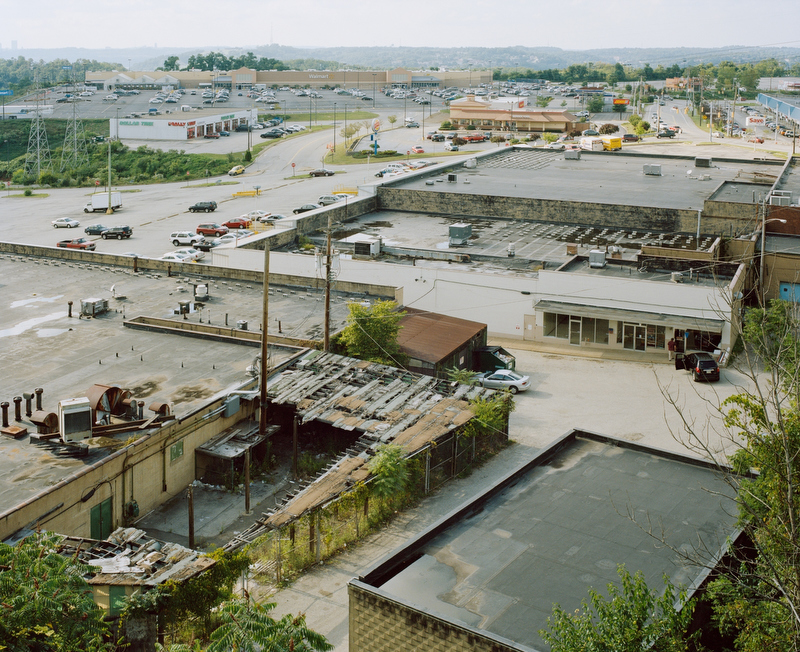

J: Thanks for talking! How has growing up where you work now affected your practice and why does living where you make work matter to you?
R: On an aesthetic level, it has definitely affected the way that I see things. The way that I build compositions is affected by the landscape here: everything is both built and hidden, and things are deeply layered. I find [this type of] landscape really interesting and thinking about how that translates to a 2-dimensional space. On a conceptual level, it’s really important to me to work here because of the way that I understand it. Growing up here, understanding the landscape, people, culture of the region allows me to see things more fully in a way that whenever I travel to shoot in another state or country, there’s a level of understanding that I’ll never accomplish. [Those] images are inherently of the surface in the short amount of time that I’ll be there. There are certain things that do translate; for example, growing up in the suburbs translates largely to suburbs across the United States. There are certain things that I can up and take with me, but it’s important to understand the history and this back-and-forth conversation I have with this space over time. The work that I pull from one project to another project to another starts to shift, and I can dig deeper into core ideas and themes throughout. Wendell Berry is a big inspiration on my work, his writings about place and the culture and how that’s important to an artist and ecosystem. While he’s talking about small-town rural America, I think those ideas translate to small-city Pittsburgh or Appalachia as a whole and the middle area of the rust belt, the weird area Pittsburgh is situated in. A lot of my early interests were around community journalism, so no matter how far away from that I go, there’s still the core intent of what it means to be a communicator, storyteller, documentarian, artist, whatever word you want to use for it. That understanding of place is important, the localities of that and the universalities that I hope could be expanded from it.
R: Also – not that it’s necessarily specific only to this region – there’s this dark sense of humor that pervades in this region that doesn’t always translate outside of it … It has sardonic tendencies, but also a sincerity and empathy that I think come from a past built upon distrust of authority and the market yet a necessity to work these jobs that are part of a system that you don’t have a choice in. This ‘well, we might as well make the best of what we have’ attitude. This isn’t a region that’s built for the working class or minorities; it’s built for rich people to get richer and then leave the region when they’re done.
J: I think that comes through both in the region and in your work. Can you go back for a minute and talk more about the layers you mentioned — how this region in particular seems layered to you? Both conceptually and visually. I haven’t heard that often but it makes a lot of sense to me, also having lived here [in Pittsburgh] for a while compared to other places.
R: Yeah, they’re really closely tied. One of the things I really love about this place is that so much of the immediate history is visible. There’s this two-fold thing that’s happening because of our attempt to manage the landscape, we leave our mark on it, but it’s inherently impossible to implement those controls over the place. So you have this push-and-pull that ends up showing visibly, in say, a house that’s buried on a hillside, maybe abandoned but you still see traces of the human hand in it. It’s being overtaken by the earth by trees or a landslide that has a way to shape that form. Especially in how quickly this region has gone from pre-colonial, to colonial, to industrial, to post-industrial in the matter of just a few hundred years. With how quickly that has changed, not very much of the immediate or original has been totally forgotten or covered over. So you can still see a lot of those histories and marks show up in the landscape. Those layers are working aesthetically because they are visuals, but those ideas of region and place I’m working with – and socioeconomics around that – [also] translate. Aesthetically and conceptually, there is a very fine line, and that’s why I love working here – because those two are so closely tied. The aesthetics aren’t secondary to the concept; it’s really important to understand how this place looks to understand some of themes.



J: That ties into something else I’m curious about – I know we talk a lot about how many people in this region are using industrial ruins and structural decay as a reference for what’s happening in the region. You depart from that in several ways — what kinds of things are you looking for when you go out to shoot or within day-to-day life to not fall into the expected?
R: I’m certainly guilty of making those images at times. I don’t see an abandoned building and turn the other way, but I don’t go into those situations looking at them as abandoned buildings, more as monuments to a certain age and form of capitalism. There’s certainly a sense of cynicism that can come with looking at them in that way, but I do actively try to avoid nostalgia. I run a fine line of it, but with work from this region, when you look at something that hasn’t changed in 60 years (like the facade of a building that’s run-down), certain people read that with a sense of nostalgia, as a forgotten place. In this region, because of how it tends to be stereotyped, people might place certain preconceived emotions on it, so I try to subvert the meaning of the abandoned building or facade. One example might be in the project Misplaced Fortunes, there’s a photo with a building and only it’s one wall is partially standing and behind it, you can see another structure deteriorating. It’s a visually confusing vantage and set of layers but it doesn’t differ aesthetically from most images that depict deteriorating structures in this region. To subvert this surface depiction, I’m sequencing it in between these other two photos of a historical postcard and an open coal-pit referencing back to Hudson River School aesthetics. I’m trying to anchor this in between these other things, not as a moment in time we should look back on fondly or critically, but rather to be more objective about ‘this is a moment that’s happening that we’re dealing with, and possibly, here are some of the social repercussions or anomalies that led into it.’ Trying to place it into greater context as opposed to giving it the aesthetic satisfaction that the viewer may want seeing an abandoned lot or train tracks.
J: It sounds like a lot of the nuance in your work comes from the sequencing; can you talk about how you’re sequencing, particularly in your newer work Misplaced Fortunes? You have found images, moments of text, original images.
R: I’m thinking first about how to build connections between images that aren’t necessarily connected to each other, in sequence, theme, or aesthetics. How to bridge the gap between images that might be 30 paces apart. How I can connect this and that, all while somebody might be forgetting an image way back [in the edit]. I tend to work a lot with direct symbolism and subject matter – at times I get away from that and use the edges or compositional complexity – but often, there’s similar shapes or forms that carry on. I started thinking about photographs as homonyms: one image that has many different meanings but always looks (or sounds) the same. I can use certain language and literature to expand the photograph within a sequence or narrative. The text has always been a big part [of my work], specifically short stories, and I’m often working with writers. When looking at photography fully as one form of communication, design, text, and all these other forms of language play an important role in supporting the image but also subverting it over time. Not making that narrative perfectly linear and clear, but undermining it with different perspectives.
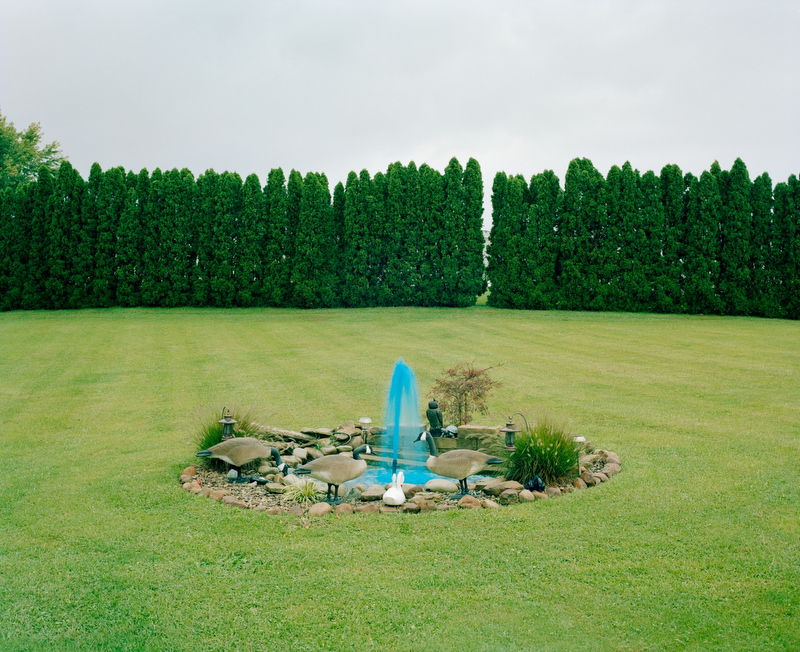

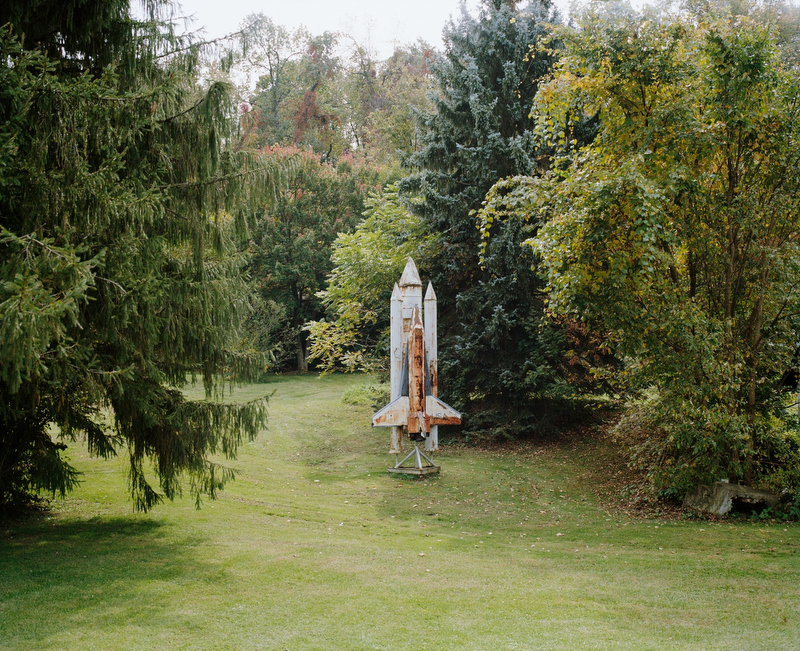
J: Specifically with Misplaced Fortunes, how did you decide that you wanted a short story in the middle of the edit, instead of an image index like you initially had? How do you decide on this interplay of text and image, for people who maybe haven’t seen this work develop over time?
R: I was doing a lot of research to find myths around lost treasure and history around the road, Native American trails, and westward expansion, different takes on these histories. I was collating a lot of this to make a source book of text [to go with the work]. It ended up too incoherent and tedious to go back-and-forth; it looked insane. Within this, I had originally envisioned a writer to take the voice of a curator for the ‘Museum of Misplaced Fortunes,’ which was the way I was thinking about this project collectively: a collection of work as a museum that was another layer on top of the 300-400 years of history I was working from. I wanted a curator with a sardonic tone, someone who can take that academic tone and subvert it in a way that the work feels like it’s doing. To understand the humor and darkness; the comedy living between all the other emotions … I ended up [removing the source book] and working with Edith Fikes. I sent her a ridiculous amount of work and research from six or seven years, and she immediately got it coming from a photography background with no disparity between text and image overlap. The text for this had to be in conjunction with the images not in parallel; there was a great back-and-forth ‘telephone’ between us. All the text had to be from a singular voice, and Edith has that with a complexity of emotion. It reminded me of Mary Robison’s Why Did I Ever, a book that was a big inspiration for this project and its structure.
R: [The reference text throughout] comes from H. Glenn Caron’s Cache Hunting. It’s so sincere. The wisdoms I’m pulling from it, his philosophy [on how to treasure hunt], gets distilled when you remove it from the context of treasure hunting. It could be talking about anything: photography, treasure hunting, history, morality. These things are all a factor in this work, the morality of land and occupation.
J: His sincerity makes it so his statements don’t hit you over the head, even though they’re very direct.
R: That’s something I keep going back to, is maintaining sincerity in my work. Going back to the idea of stereotypical and superficial (or surface) depictions of this region, there’s a lack of sincerity in looking at the landscape in that way. The sincerity is that I’m going to give this the time to see it in a lot of different people’s terms: my terms, your terms, the people who were here before, the people who lost their jobs when [the landscape] changed.
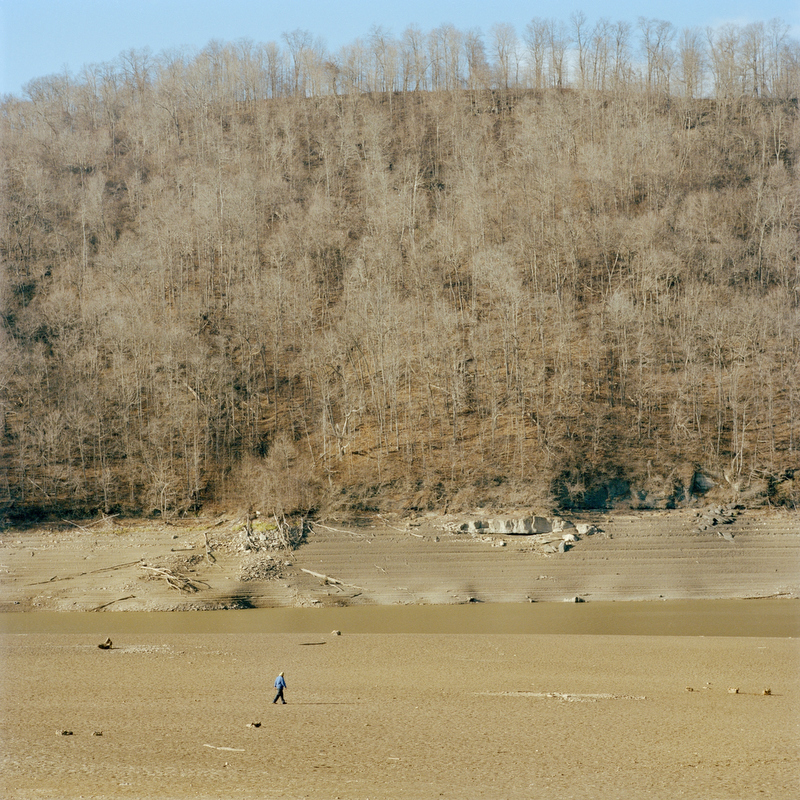
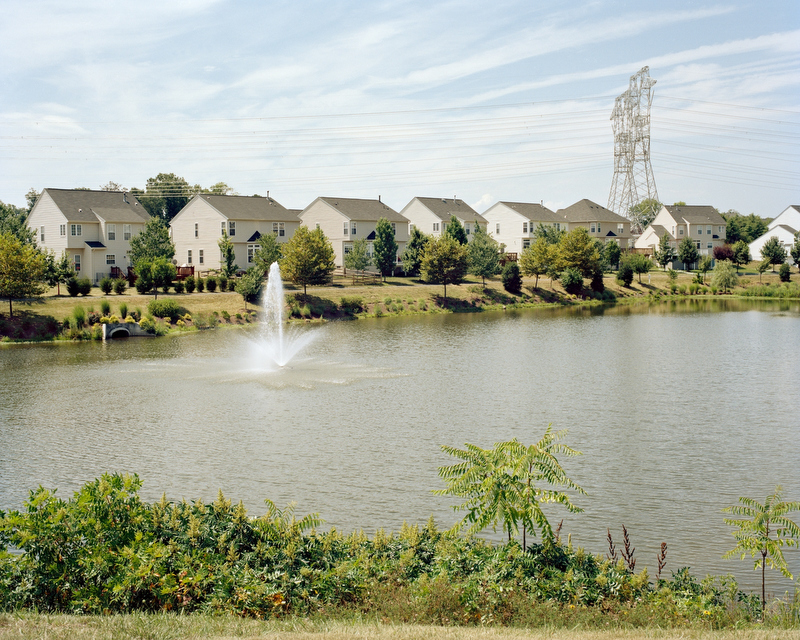


J: When you were living and making work in NYC for several years, do you feel like it had any of these tendencies of sincerity? How was it different or the same? I’m really interested in how moving changes or doesn’t change the work being made.
R: Even when I was in NY, I was still making work that felt tied to this place. The two projects I made had very little to do with people, and A Map with Open Space had very little to do with NY explicitly except for the chaos and density of it. Moultrie was this somewhat escapist project where I went to the areas I felt most comfortable because they reminded me of here [in PA]. I was making images that I knew when I looked back at them later, there would be a sense of personal nostalgia that feels different than an open-ended broader type of nostalgic feeling. Pink rose was a color that I was using a lot, making very colorful images that I wouldn’t make here, probably because I couldn’t make them here. NY is a lot brighter and sunnier; we don’t get that here. But the way I was thinking about my work didn’t change, though I was still making work here in PA so that was a lot of it too.
R: There’s this continuity with all my work; there’s not a clear delineation between where a project starts and stops. Certain themes I’ll revisit in new ways in other projects, things that I feel like I’m neglecting. I didn’t fully look at certain mythology around westward expansion in my project California, PA, so I wanted to dig deeper and found a way to do that with Misplaced Fortunes.
J: The work does all feel continuous. A theme that I keep seeing in your work is around the idea of transportation and navigation; boats sitting on grass, empty roads, maps. Even with several commissions on space and airplanes. It feels like it references this history of road trip photography, but ironically because it’s all made in a relatively stationary region that is rarely a road trip destination being so far east and cold. Can you talk about this?
R: I’m very conscious of the ‘white-dude’ history of road trip photography, and it’s work that I’m fascinated by while also having an idea of where I sit within it. For example, with California, PA, it was largely a road trip project that went nowhere, a reaction in part to the recession. I started making that work in the middle of the recession thinking I’d drive back and forth across the country, before realizing ‘oh, I don’t have any money, I can’t actually do that,’ and I don’t really want to do that. Going back to your first question, it was much more important to me to make work in the region I knew. I set out to make a road trip without going anywhere and looking into the history of [California, PA], I realized the legend of this town, is that people tried to go west but never could. They ended up in this little bend in the river and said ‘that’s fine, we’ll call it California.’ I thought it was hilarious and exactly related to what I was doing, that sardonic humor with nihilism and realism, what makes this place special and often frustrating.
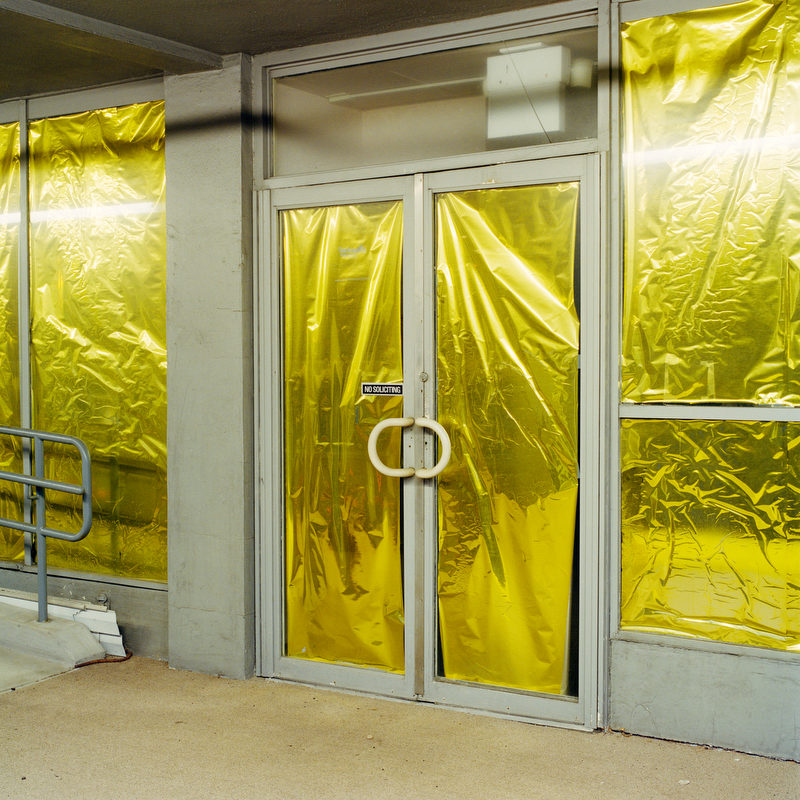


J: Switching direction back to your body of work as a whole, how do your commissions live with or feed your personal work?
R: Sometimes commission photos will end up in personal projects. In California, PA, there’s more than a handful and in Misplaced Fortunes as well. There’s so much overlap between my personal work and commission work, and my favorite commissions are the ones that start to move over into my personal work. Vice versa, it’s good for my personal work to be grounded in some other practice or audience. If I’m just making work that’s talking to only other artists, it’s missing the point. I’m not just trying to make work about photography or art, I’m trying to talk about other things. A lot of commissions have also led directly to concepts that are factoring into my personal work because I’m exposed to new things.
J: Interesting about the audience differences; I never really thought about that. You mention that you’re partially rooted in documentary tradition, can you expand on the ways in which you depart or stick with documentary?
R: There are things I can’t get away from with documentary, and there are also a lot of issues that I have with it. ‘Documentary’ is an outmoded word at this point, but having that grounding of reality in my work is important to be able to expand depiction of the truth. I don’t feel like I have the creativity to completely fabricate narratives, so the aspect of creative nonfiction is fascinating to me. There’s a sense of the tradition of documentary that states it always tells the truth, which I don’t see eye-to-eye with… but it does try to get at a reality. If I can take what I like while questioning and figuring out a way to deal with the problematic aspects of a singular version of truth… it works for me. The more I can dig into one thing [like documentary], I have more freedom through those set or specific limitations.
J: Last, what’s next after Misplaced Fortunes?
R: I’ve been sketching things the past couple of years. I’ve been thinking about landslides a lot recently; these layers of land that are literally sliding away and the pretty obvious metaphor of that fragility. This region has landslide issues, so it comes back to the history of this place, and there may be some other things in between once I start making.
J: Makes sense! Thank you for talking about Misplaced Fortunes, your process, and your broader body of work with me.
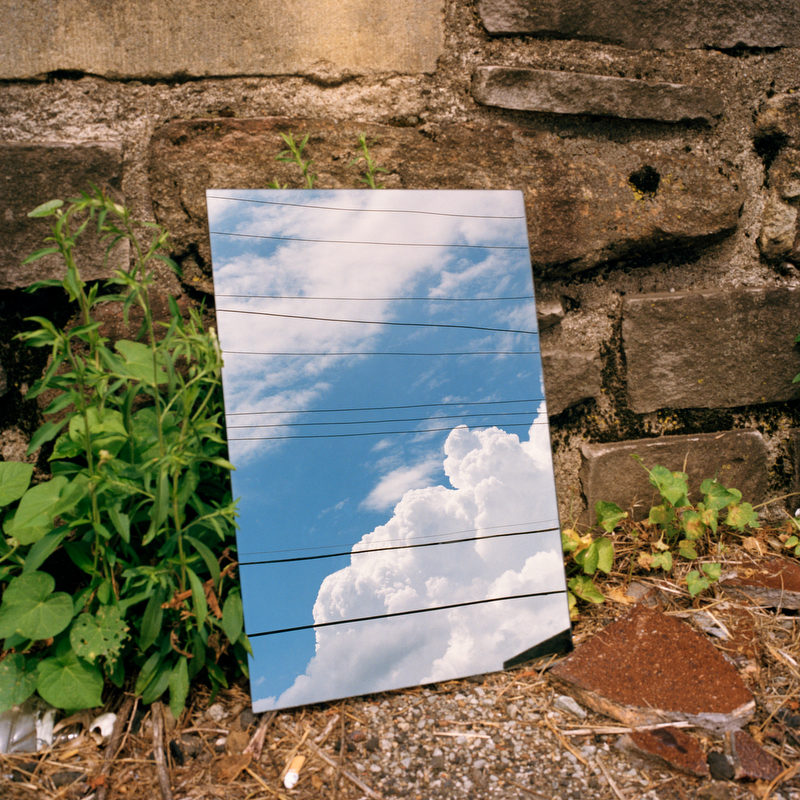


To view more of Ross Mantle’s work please visit his website.